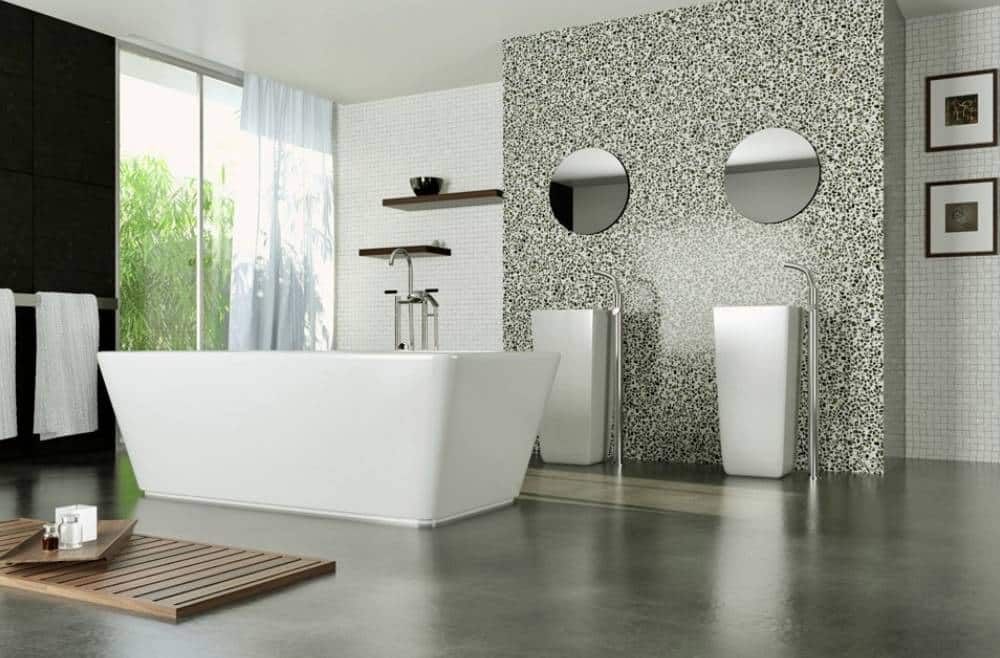What is Microcement?
Microcement is a well-balanced blend of cement, fine aggregates, mineral pigments, additives, polymer, and water-based resins, widely popular for adequate finishing and aesthetic appeal. Since the 1930s, microcement has been increasingly gaining demand in the context of interior design coating across walls, floors, benchtops, furniture, and more.
This decorating coating cladding material stands out strongly due to effortless renovations with less work and only 3mm thickness. It takes at least one month to achieve complete hardness at 20º C temperature and 60% relative humidity. However, microcement Melbourne can endure a high temperature for a certain period of time, and its performance can vary depending on numerous factors like colour, thickness, weather, etc.
The range of microcement colours, thicknesses, and excellent adherence offers countless options to enhance the aesthetics, elegance, exclusivity, and naturalness of indoor/outdoor spaces. Now, one of the most common concerns shared by everyone is how to maintain the charm and durability of microcement once it is applied.
Read on to this comprehensive guide from Melbourne Artisan experts to explore some valuable recommendations and tips for microcement maintenance to reduce surface wear, ensuring incredible durability.
Pre-installation Precautions for Microcement
- Before getting into the tips, the primary and most crucial step is to ensure proper microcement installation for flawless continuity and anti-slip finishes.
- The concrete or screed surface should be cured, free from the substances that restrain adhesion, clean, dust-free, dry, and leveled.
- Make sure the cladding surface is watertight and formed carefully, ensuring zero moisture issues and no cracks.
Regular microcement maintenance after installation can significantly protect the appearance, durability, unnecessary cracking and other damages. Here are the effective tips on how to take care of microcement.
Frequent Cleaning
Avoid using abrasive materials like scrub brushes, steel wool, or abrasive pads instead, use non-abrasive mops with neutral soaps for regular cleaning to prevent dusting, staining, and preserve the fresh finish. Prevent exposure to moisture and immediately wipe down the wet spot to control excessive damage.
Incorporate Protection Layer
Incorporate hard protective coating or film to the surface where ready-to-use microcement is applied to increase the mechanical and chemical resistance to abrasion. Achieve better waterproofing and extend the life of the space decorated with microcement. Use finish forte, finish, finish forte plus, water resistance, or prime to achieve better waterproofing and extend the life of the space decorated with microcement.
Avoid Heavy Piece Transit
Microcement takes at least four weeks to achieve 100% hardness, so it is highly recommended to completely avoid heavy transition of furniture, goods, or walk-ons for minimum one week. It helps to achieve optimal settling of microcement and prevent serious dents and damages.
Troubleshoot Potential Problems
Troubleshoot problems like spillage of aggressive detergents, vinegar, acetone, and surface wear, as it can significantly damage the polyurethane varnish layer and degrade the surface finish. It is highly advisable to address spillage issues and wear signs immediately without affecting the microcement layer’s integrity.
Key Benefits of Using Microcement
- 2-5mm thickness of microcement makes it absolutely effortless to apply it on both existing surfaces and new surfaces.
- It offers a wide range of colours, finishes, and thicknesses, making it suitable for internal as well as external surfaces.
- Absolutely easy to maintain as high-quality sealants and primers are available for commercial and residential uses.
- Being a continuous material, it does not require any expansion joints between two pieces.
- It is widely adopted due to seamless adherence to various surfaces like tiles, concrete, or polished plaster across indoors and outdoors.
- Easily applicable to any surface without any heavy equipment or machinery.
Microcement is a polymer-based coating material that is widely used to apply a thin protection layer and a modern concrete look to floors, walls, and furniture across residential and commercial environments. With a variety of colours, thicknesses, and outstanding adherence, it offers a wide range of decorative surface finish possibilities. Demonstrating the five valuable tips, including regular cleaning, incorporating a protection layer, avoiding heavy piece transit, applying acrylic wax, and addressing/troubleshooting the potential problems as microcement maintenance can incredibly prevent unfortunate surface damage, spillage issues and enhance durability.
Are you planning to decorate your space with the finest quality microcement? Melbourne Artisan is the most reliable supplier of microcement in Melbourne, Australia. Get in touch with us to leverage the well-balanced microcement cladding services across all levelled surfaces, regardless of dry, smooth, rough, bumpy, or wet conditions.

